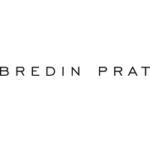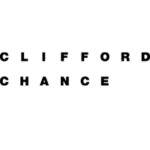-
What types of conduct and causes of action can be relied upon as the basis of a competition damages claim?
Claims are typically brought as claims for breach of statutory duty giving rise to a cause of action in tort. Depending on the nature of the claim and the date when the cause of action arose, a claim may be brought in respect of:
- The ‘Chapter I’ prohibition under the Competition Act 1998 (“CA98”) on agreements between undertakings or concerted practices which have as their object or effect the prevention, restriction, or distortion of competition within the UK (section 2(1));
- The ‘Chapter II’ prohibition under the CA98 on the abuse by an undertaking of a dominant position in a market that may affect trade within the UK (section 18(1));
- Article 101 of the Treaty on the Functioning of the European Union (“TFEU”), which prohibits similar conduct as the Chapter I prohibition; and
- Article 102 TFEU, which prohibits similar conduct as the Chapter II prohibition.
Historically, claims were typically brought under either (i) both Chapter I and Article 101 TFEU or (ii) both Chapter II and Article 102 TFEU.
Following the UK’s withdrawal from the European Union and the subsequent transition period which ran until 31 December 2020, the prohibitions under Articles 101 and 102 TFEU ceased to apply in the UK. However, a claimant may still make a claim in relation to an infringement of Article 101 or 102 TFEU that occurred before that date so long as they could have made the claim before 31 December 2020.
Claims that rely on an existing infringement of competition law established by the decision of a relevant competition authority, such as the Competition and Markets Authority (the “CMA”), to establish liability are known as ‘follow-on’ actions. For follow-on actions, the claimant does not need to prove the infringement because it is established by the competition authority decision (it must, however, still establish causation and quantum of damages).
Claims that allege an infringement of competition law are known as ‘standalone’ actions. In standalone actions, the claimant must prove the defendant’s liability for the competition infringement, in addition to establishing causation and quantum of damages.
Some claims feature both follow-on and standalone elements, and these are known as ‘hybrid’ actions.
The UK/EU Withdrawal Agreement and UK law recognise that the European Commission has continuing competence in cases where it initiated its investigation procedure prior to 31 December 2020. In such cases, an infringement decision made by the Commission after 31 December 2020 may still be relied on by a claimant as binding evidence of the infringement that it establishes.
-
What is required (e.g. in terms of procedural formalities and standard of pleading) in order to commence a competition damages claim?
Claims can be brought either in the specialist Competition Appeal Tribunal (“CAT”), which has jurisdiction across the UK, or the civil courts (please see Q6 for further details). In all cases, claims are started by filing a ‘claim form’.
In the CAT
Rule 30 of the CAT’s rules provides that the claim form must include certain details, including:
- details of the parties;
- whether the claim is in respect of an infringement decision, and if so, whether that decision has “become final” (please see Q9 for further details);
- a concise statement of the relevant facts, identifying, where applicable, any relevant findings in an infringement decision (cross-referring to the relevant parts of that decision);
- a concise statement of any contentions of law which are relied on; and
- the relief sought in the proceedings – in the case of a damages claim, this includes an estimate of the amount claimed in damages supported by an explanation of how that amount has been calculated (which may be set out in an annex).
In the civil courts
In the civil courts, claims must be brought in accordance with the relevant court rules and procedures. In the case of the High Court of Justice for England and Wales (the most common forum for competition damages actions outside of the CAT), the relevant rules are the Civil Procedure Rules (“CPR”).
Under the CPR, the claimant needs to provide only details of the parties, brief details of the claim, and an indication of value. However, the claimant must provide fuller details of their claim in short order by filing ‘particulars of claim’, usually within 14 days of service of the claim form.
Service of the claim form
The general position is that the claim form must be served on the defendant. If the defendant is outside the jurisdiction, an application for permission to effect service may be required.
The standard of pleading
It is a standard requirement in commercial litigation that a party’s statement of case must:
- allow the other side to know the case it has to meet; and
- set out the essential facts which go to make up each essential element of the cause of action (as opposed to the evidence supporting the claim).
These requirements apply equally in competition litigation claims.
-
What remedies are available to claimants in competition damages claims?
The remedy usually sought by claimants is an award of damages (please see Q4 for further details).
The Competition Appeal Tribunal (“CAT”) and the civil courts also have the power to make injunctions (or in Scotland, interdicts) mandating or prohibiting certain conduct.
Currently, claimants can seek declaratory relief in the civil courts only. However, the Digital Markets, Competition and Consumers Act 2024 (“DMCCA”), which received Royal Assent on 24 May 2024, provides the CAT with the same power. At the time of writing, this provision of the DMCCA is yet to come into force.
-
What is the measure of damages? To what extent is joint and several liability recognised in competition damages claims? Are there any exceptions (e.g. for leniency applicants)?
Measure of damages
Generally, damages for tort claims are compensatory rather than punitive, meaning that they are meant to restore the claimant to the position they would have been in but for the breach of competition law. In cartel claims, for example, the loss that is claimed for is usually the difference between the prices paid by the claimant and the prices they would have paid but for the breach of competition law, known as the ‘overcharge’. Broader and more varied forms of loss are often claimed in cases concerning abuse of dominance, such as loss of profits arising out of denied business opportunities.
Additionally, a claimant may claim damages for its costs of financing any losses suffered, for which the measure of damages will reflect the financing costs it incurred, such as the payment of interest under a loan agreement (please see Q14 for further details).
For competition damages actions, there are two exceptions to the general position described above that damages must be compensatory:
- First, in competition collective actions, the Competition Appeal Tribunal (“CAT”) may make an aggregate award of damages in respect of the class without assessing the loss suffered by each individual class member (please see Q11 for further details).
- Secondly, in certain (limited) circumstances, the civil courts and CAT have jurisdiction to award exemplary damages.
Joint and several liability
There is no legal obligation on the claimant to sue all the entities who have participated in infringing conduct, such as a cartel. The claimant is generally entitled to rely on the joint and several liability of each participant for all the damages caused (known as ‘joint tortfeasors’), such that they may for example elect to claim against a single participant for the totality of their losses.
The general position described above is subject to an exception in the case of leniency recipients (please see Q16 for further details).
There is also the separate question of the allocation of liability as between joint tortfeasors (please see Q19 for further details).
-
What are the relevant limitation periods for competition damages claims? How can they be suspended or interrupted?
The applicable limitation period depends on various factors, including the forum for bringing the claim.
Note that this answer does not address the position for claims brought in the Competition Appeal Tribunal (“CAT”) before the coming into force of the Consumer Rights Act 2015 on 1 October 2015.
High Court (England and Wales; Northern Ireland)
In the High Court of Justice for England and Wales and the High Court of Justice for Northern Ireland, a six-year limitation period applies. However, different rules apply with respect to the operation of this limitation period depending on whether the loss or damage was suffered before or on/after 9 March 2017 (see below).
Court of Session (Scotland)
In the Court of Session (Outer House), a five-year prescription period applies. However, different rules apply with respect to the operation of this prescription period depending on whether the loss or damage was suffered before or on/after 9 March 2017 (see below).
CAT
In the CAT, where proceedings were commenced after 1 October 2015, the relevant limitation rules depend on when the claim ‘arose’ for limitation purposes.
If the claim arose before 1 October 2015 then transitional provisions apply, including a special two-year limitation period beginning with when the relevant infringement decision became final (following any appeals or the period for appealing the decision) or the date on which the cause of action accrued, whichever is later.
If the claim arose after 1 October 2015, a six-year limitation period applies. However, different rules apply with respect to the operation of this limitation period depending on whether the loss or damage was suffered before or on/after 9 March 2017 (see below).
Loss or damages suffered before or on/after 9 March 2017
As noted above, different rules apply with respect to the operation of this limitation period depending on whether the loss or damage was suffered wholly before or on/after 9 March 2017, when Directive 2014/104/EU (the ‘Damages Directive’) was implemented in the UK.
If the loss or damage was suffered before 9 March 2017, the standard six-year limitation period applies, which runs from the date the cause of action accrued. However, where any fact essential for the claimant to prove in order to complete their cause of action has been deliberately concealed from the claimant by the defendant, the period of limitation shall not begin to run until the claimant has discovered the concealment or could with reasonable diligence have discovered it.
If the loss or damage was suffered on/after 9 March 2017, limitation begins to run from the later of the day on which the infringement ceases and the day on which the claimant first knows or could reasonably be expected to know (i) about the infringer’s behaviour, (ii) that the behaviour constitutes an infringement of competition law, (iii) that the claimant had suffered loss or damage arising from that infringement, and (iv) the identity of the infringer. Additionally, the limitation period is suspended for the period of any investigation by a relevant competition authority, and if a finding of infringement is made, the investigation period is deemed to end one year after the infringement decision becomes final.
Collective proceedings
The commencement of collective proceedings may suspend the limitation period for new proceedings started in respect of the same claims (or part of them). However, if the loss or damage was suffered before 1 October 2015, there is no suspension.
-
Which local courts and/or tribunals deal with competition damages claims?
Except for competition collective actions, which can only be started in the Competition Appeal Tribunal (“CAT”), competition damages claims can be started in either the CAT or the civil courts.
Cases in the CAT are heard before a Tribunal consisting of three members, typically comprising the President of the CAT or one of the Tribunal’s Chairs and two Ordinary Members. The Tribunal’s Chairs are supplemented by specified judges of the Court of Session of Scotland or the High Courts of England and Wales or Northern Ireland. Ordinary Members have expertise in economics, law, business, technology, accountancy, and other fields.
Claims in the civil courts are typically commenced in the High Court of Justice for England and Wales, which has jurisdiction in England and Wales. Claims commenced in the High Court are usually issued in either the Competition List or the Commercial Court and will be heard by a High Court Judge.
Claims may be transferred from the High Court to the CAT, either on the application of the parties or on the High Court’s own initiative. The courts have held that claims in respect of infringement decisions of a competition authority or alleged infringements of the competition provisions of domestic or EU competition law “should in normal circumstances be transferred to the CAT”, however, where proceedings also raise other issues then it is possible to transfer to the CAT only those issues with which it is permitted to determine (Sainsbury’s Supermarkets Ltd v Mastercard Inc [2018] EWCA Civ 1536, [357]-[358]).
-
How does the court determine whether it has jurisdiction over a competition damages claim?
International instruments
For claims brought prior to the conclusion of the UK’s Brexit transition period (on or before 31 December 2020), the jurisdiction of an English court to hear a claim against EU-domiciled defendants is governed by Regulation (EU) 1215/2012 (the “Recast Brussels Regulation”). Similarly, the Lugano Convention governs questions of jurisdiction as between the EU and Norway, Iceland and Switzerland, which is applicable to cases initiated in the UK on or before 31 December 2020.
For claims initiated after 31 December 2020, neither the Recast Brussels Regulation nor the Lugano Convention apply and jurisdiction is determined in accordance with the common law of England and Wales (or the law of Scotland or Northern Ireland, where applicable).
Domestic law
Private competition damages claims for standalone and follow-on competition damages actions may be brought either in the civil courts (such as the High Court of Justice for England and Wales) or in the Competition Appeal Tribunal (“CAT”). Competition collective actions may only be started in the CAT.
Whether the civil courts have jurisdiction depends on the relevant domestic law (of England and Wales, Scotland or Northern Ireland, as applicable). Under the common law of England and Wales for example, the courts will have jurisdiction (without the permission of the court being required) if a defendant can properly be served with proceedings because it:
- has a place of service in England and Wales (e.g. a registered office) where it carries on its activities; or
- has appointed English solicitors or an agent under contract to accept service on its behalf.
For cases brought in the CAT, the test is whether the defendant can be served anywhere in the UK, not just in England and Wales.
If the defendant cannot be served in the jurisdiction, a claimant may seek the permission of the CAT or civil court (as applicable) to serve proceedings outside of the jurisdiction.
-
How does the court determine what law will apply to the competition damages claim? What is the applicable standard of proof?
When ascertaining what law applies to a competition damages claim, it is necessary to consider the relevant time period for the claim. The analysis also depends on the relevant domestic law (of England and Wales, Scotland or Northern Ireland, as applicable). In this response, we consider the position under the law of England and Wales, by way of an example.
Prior to 1 May 1996
Prior to 1 May 1996, the English common law choice of law rules apply, including the so-called rule of “double actionability” which provided that in general, where a tort was committed outside England and Wales, it would only be actionable under English law if the tort (i) would be actionable if it had been committed in England and Wales, and (ii) would be actionable in the jurisdiction where the tort was committed. However, this general rule is to be applied flexibly and the interests of justice may require it to be modified or departed from. In addition, the choice of law rules permitted a particular issue between the parties to be governed by the law of the country which, with respect to that issue, has the most significant relationship with the occurrence and the parties.
Between 1 May 1996 and 10 January 2009
For claims relating to infringements in the period from 1 May 1996 to 10 January 2009, the applicable law is determined by reference to the Private International Law (Miscellaneous Provisions) Act 1995 (the “1995 Act”). Section 11 of the 1995 Act contains the general rule, that the applicable law is the law of the country in which the events constituting the tort occurred. In the case of competition claims, this will be the law of the country in which the “most significant element or elements” of the tort occurred, with such elements including where the restriction of competition occurred and where the loss was suffered. This falls to be determined on the facts of the case.
11 January 2009 to date
When determining the applicable law for the period after 11 January 2009, Article 6(3) of EC Regulation 864/2007/EC (“Rome II”) applies. Rome II continued to apply to the UK during the transition period following the UK’s withdrawal from the EU and was converted into UK law as retained EU law.
Under Article 6(3)(a), the general rule is that the applicable law is the law of the country “where the market is, or is likely to be, affected.”
Article 6(3)(b) alternatively provides that when the market is, or is likely to be, affected in more than one country, a claimant who sues in the court of the domicile of the defendant may instead choose to base his or her claim in the law of the court seized, provided the market in that Member State is amongst those “directly and substantially affected” by the restriction of competition out of which the claim arises. Therefore, unlike Article 6(3)(a), a claimant cannot choose a court simply because the market is “likely to be” affected, rather the market must be directly and substantially affected by the restriction of competition.
Where a claimant sues more than one defendant, they may only base their claim on the law of the court seized if the restriction on competition on which the claim against each of the defendants relies “directly and substantially affects” the market in the Member State of that court.
The applicable standard of proof is the “balance of probabilities”. In essence, the claimant must convince the court/CAT that the occurrence of the event was more likely than not.
-
To what extent are local courts bound by the infringement decisions of (domestic or foreign) competition authorities?
Domestic competition authorities
The Competition Appeal Tribunal (“CAT”) and civil courts are bound by decisions of the CMA (and sectoral regulators with competition powers). Such decisions can therefore be relied on in ‘follow-on’ actions to establish liability such that the claimant does not need to prove the infringement. Accordingly, follow-on actions are typically concerned only with issues of causation and quantum of damages.
Foreign competition authorities
The CAT and civil courts are also bound by infringement decisions of the European Commission made:
- before 31 December 2020 (the end of the transition period for the UK’s withdrawal from the EU); or
- after 31 December 2020 in a case where the Commission has ‘continuing competence’ because it initiated its investigation procedure prior to that date.
In either case, a Commission decision may be relied on by a claimant as the foundation for a follow-on action.
Otherwise, decisions of foreign competition authorities are not binding on the CAT or civil courts. However, in practice, a claimant may argue before the CAT, which has a wide discretion as to the evidence to be admitted, that such decisions have probative value in any event.
The extent to which an infringement decision is binding
The CAT or civil courts often determine, at an interim stage, the extent to which the relevant infringement decision is binding in the proceedings. The legal principles depend on the nature of the infringement decision.
In the case of a European Commission infringement decision, in general terms, only the ‘operative part’ of an infringement decision is binding on the court/CAT, together with the decision’s recitals which provide the ‘essential basis’ or ‘necessary support’ for the operative part of the decision, and the remainder will not be binding (see for example Royal Mail Group Limited v DAF Trucks [2020] CAT 7 where the CAT considered this in respect of the European Commission’s Trucks Cartel decision (subsequently upheld by the Court of Appeal (reference [2020] EWCA Civ 1475)).
In the case of a competition law infringement decision of the Competition and Markets Authority (‘CMA’) or the sectoral regulators, findings are binding on the civil courts or CAT:
- pursuant to section 58A of the Competition Act 1998 (“CA98”) insofar as they are integral or directly relevant to a clearly identifiable and definitive finding of infringement; and/or
- pursuant to section 58 of the CA98 insofar as: (1) they constitute clearly identifiable findings of fact to a given effect; and (2) the civil courts or CAT does not otherwise direct.
Where the infringement decision in question is a ‘settlement decision’, meaning the addressees have admitted anti-competitive conduct, and the claimant relies on that decision, the defendant may be prevented from seeking to resile from their admissions (regardless of its binding effect) by force of the ‘abuse of process’ doctrine in English law (please see the CAT’s judgment in Royal Mail (referenced above), which involved a settlement decision).
Relevance of appeals
Relevant infringement decisions are only binding once they have become ‘final’, meaning that (i) the period for any appeals against the decision have expired without an appeal having been brought and (ii) that any appeal brought (and any further appeal brought) has been decided or otherwise ended and the period for appealing against any such decision has expired without a further appeal having been brought (please see Q10 for further details).
-
To what extent can a private damages action proceed while related public enforcement action is pending? Is there a procedure permitting enforcers to stay a private action while the public enforcement action is pending?
The civil courts and the Competition Appeal Tribunal are prohibited from delivering judgments which may conflict with decisions contemplated by the CMA (or the European Commission in the case of investigations which commenced before the end of the transition period).
In situations where a public enforcement action is pending and private damages actions seeking to follow on from the public enforcement are on foot, the trial in the private damages cannot take place until after the parallel public enforcement proceedings have concluded.
-
What, if any, mechanisms are available to aggregate competition damages claims (e.g. class actions, assignment/claims vehicles, or consolidation of claims through case management)? What, if any, threshold criteria have to be met?
There are a number of mechanisms available in the UK to aggregate competition damages claims, the most notable of which is the collective proceedings regime in the Competition Appeal Tribunal (“CAT”).
Collective proceedings regime
‘Opt-in’ or ‘opt-out’ collective proceedings can be brought in the CAT. This procedure allows a single class representative to bring a claim on behalf of an entire class for losses suffered as a result of infringements of competition law.
A proposed collective action must be certified by the making of a ‘collective proceedings order’ (“CPO”) by the CAT. When determining whether or not to grant a CPO, the CAT must be satisfied that it is just and reasonable for the proposed class representative to act as a representative in those proceedings and that the claims are eligible for inclusion in collective proceedings. The CAT will also determine whether the collective proceedings should continue on an opt-in or opt-out basis.
A ‘carriage dispute’ arises where there exist two or more applicants for similar opt-out collective proceedings. In this scenario, the CAT will determine which proposed class representative is most suitable to act on behalf of the class.
Other case management approaches
It is not uncommon for a multitude of (non-collective) private damages actions to be filed which all relate to the same infringement. In order to avoid multiple trials of the same, common issues across a large number of cases (which would give rise to the risk of inconsistent judgments), the CAT has developed means of case managing large volumes of related competition damages actions.
In particular, in 2022 the CAT introduced an ‘Umbrella Proceedings’ practice direction, which set out the CAT’s practice to order that issues arising in one set of proceedings be determined together with the same or similar issues arising in other proceedings, as so-called ‘Ubiquitous Matters’.
The assignment of claims is subject to limitations under English law, including the rules on champerty and maintenance. Therefore, the assignment of claims to special purpose vehicles established for the purposes consolidating claims is not a feature of competition damages claims in England.
-
Are there any defences (e.g. pass on) which are unique to competition damages cases? Which party bears the burden of proof?
The pass on defence allows a defendant to argue that a claimant’s loss has been mitigated (either wholly or in part) by it reducing its costs by negotiation with its own suppliers and/or being passed on to the claimant’s customers by increasing the prices charged to them, thereby reducing or negating the claimant’s loss. This defence is routinely invoked in cartel damages actions and presents very significant legal and evidentiary challenges for parties and the court, particularly in cases involving multiple claimants at different levels of the supply chain.
The burden of proof lies with the defendant, rather than the claimant, who must prove that the claimant’s loss has been passed on.
As well as being a ‘shield’ for a defendant, pass on can also serve as a ‘sword’ for indirect purchasers who allege that the overcharge has caused it harm because of upstream pass on. In the latter case, it is the indirect purchaser claimant that bears the burden of proving pass on.
Where a claim is governed by Directive 2014/104/EU (the ‘Damages Directive’) and a claim is brought by an indirect purchaser, there is a rebuttable presumption of the existence of pass on to the benefit of the indirect purchaser.
It is unclear whether the pass on defence outlined above is limited to competition damages actions but in practice, this is the only area of law in which the defence has been regularly invoked.
-
Is expert evidence permitted in competition litigation, and, if so, how is it used? Is the expert appointed by the court or the parties and what duties do they owe?
Expert evidence may only be admitted with the permission of the court and in accordance with the relevant court rules and procedures.
In the case of the High Court of Justice for England and Wales for example, the rules on expert evidence are set out in Part 35 of the Civil Procedure Rules (‘CPR’), which provides that expert evidence shall be restricted to that which is reasonably required to resolve the proceedings and imposes a duty on experts to help the court on matters within their expertise. The expert’s duty to the court overrides any obligation to those instructing them.
In the case of the Competition Appeal Tribunal (“CAT”), Rule 21 of the CAT Rules provides that the CAT may give directions as to whether the parties are permitted to provide expert evidence, the issues on which it requires evidence and as to the way in which evidence is to be placed before the Tribunal. As in the case of the High Court, paragraph 7.67 of the CAT Guide to Proceedings states that an expert is subject to an overriding obligation to the CAT to assist on the matters within his or her expertise.
It is possible for the court to order the appointment of a single joint expert, but it is unlikely that this would be ordered in a competition litigation case, given the complexity of the issues. Typically each party will appoint its own expert or experts.
Experts are increasingly relied upon by the court to manage the scope of disclosure. Indeed, in the CAT the President, Mr Justice Marcus Smith, has introduced a process referred to as “expert-led’ disclosure. This is a process whereby economic experts identify the material they require in order to undertake their analysis and that material is produced by the parties.
Each party’s expert(s) will typically prepare written expert reports for exchange with the other parties’ expert(s) and will be given an opportunity to produce evidence in reply. It is common for the parties’ experts to be ordered to produce a joint statement, identifying for the court the main areas of agreement and disagreement.
Experts are then cross-examined at trial, either separately or concurrently in a ‘hot tub’, which involves the parties and the CAT putting questions to the experts simultaneously.
-
Describe the trial process. Who is the decision-maker at trial? How is evidence dealt with? Is it written or oral, and what are the rules on cross-examination?
Civil courts
Most proceedings in the civil courts are heard by a single judge. The judge is the decision-maker at trial, as juries are not used in competition cases in the UK.
The rules on evidence depend on the relevant court rules and procedures. In the High Court of Justice for England and Wales for example, rules of evidence are found in Part 32 of the Civil Procedure Rules (“CPR”) and in the common law. In the case of factual witness evidence, parties typically exchange written statements in advance of trial, together with other documentary evidence upon which they intend to rely. This process is governed by Parts 32 to 35 of the CPR. Where a witness is called to give evidence at trial, they are typically cross examined by the opposing party’s counsel.
As with factual witnesses, it is typical for each party’s expert(s) to prepare and exchange written evidence in advance of trial (please see Q13 above for further detail) and those expert witnesses are also typically cross examined by the opposing party’s counsel.
CAT
Proceedings in the Competition Appeal Tribunal (“CAT”) are generally heard by a three-member panel, comprised of the President or a Chairman and two Ordinary Members. The Tribunal’s chairmen are competition and competition litigation specialists, whereas Ordinary Members have expertise in economics, law, business, technology, accountancy and other related fields. The panel are the decision-makers at trial.
The rules of evidence in the CAT are found in the CAT Rules and the CAT’s Guide to Proceedings.
In the case of factual witness evidence, the process in the CAT is broadly the same as the process in the High Court of Justice for England and Wales described above. The CAT has a broad discretion to limit cross-examination of witnesses to the extent it sees fit.
In the case of expert evidence, the process in the CAT is also broadly the same as the process in the High Court of Justice for England and Wales but the CAT is more willing to question the experts directly, through the process of ‘hot-tubbing’.
-
How long does it typically take from commencing proceedings to get to trial? Is there an appeal process? How many levels of appeal are possible?
The duration of competition claims depends on various factors including the complexity of the proceedings, the number of parties, whether the claim has been aggregated with other claims, the amount of factual and expert evidence involved, and whether the appeal of interim judgments has resulted in delay.
Private damages actions
Very few competition damages claims have proceeded through to trial in the CAT or civil courts but many have progressed to an advanced stage and settled before trial. Of those that have reached trial, they have taken on average about four and half years in the High Court of Justice for England and Wales and around the same in the CAT.
Collective proceedings
Only one collective action has been fully tried at the time of writing: Le Patourel v BT, which was started in 2021 and took three years to reach trial. To put this in context, seven live collective actions were started prior to Le Patourel, all of which are yet to be finally determined (although there have been trials on some issues in some of these cases), including Merricks v Mastercard, which was started in 2016.
Appeals
Judgments of the High Court of Justice for England and Wales, the Court of Session (Outer House) and the High Court of Justice for Northern Ireland can be appealed to the Court of Appeal of England and Wales, the Court of Session (Inner House), or the Court of Appeal of Northern Ireland respectively.
Decisions of the CAT can be appealed to the Court of Appeal, the Court of Session (Inner House), or the Court of Appeal of Northern Ireland for proceedings treated as taking place in England, Scotland or Northern Ireland respectively.
The party seeking permission to appeal will typically first seek permission from the lower court that made the judgment/decision (e.g. the High Court or the CAT). Permission can also be sought from the appeal court directly, either in the first instance or following permission being refused by the lower court.
Judgments of the Court of Appeal of England and Wales, the Court of Session (Inner House) and the Court of England of Northern Ireland can be appealed to the Supreme Court. The test for permission to appeal to the Supreme Court is that the appeal raises an ‘arguable point of law of general public importance which ought to be considered by the Supreme Court at that time’.
-
Do leniency recipients receive any benefit in the damages litigation context?
In respect of proceedings commenced on or after 9 March 2017, when the Directive 2014/104/EU (the ‘Damages Directive’) was implemented in the UK, leniency recipients receive some protection in respect of damages litigation.
In particular, successful immunity applicants can generally only be held liable for the harm caused to their direct and indirect purchasers. They will not be held jointly and severally liable for the entire harm caused by the infringement unless the claimant would be unable to obtain full compensation from the immunity applicant’s ‘co-infringers’. Similarly, their liability for contribution to their co-infringers will be limited to their relative responsibility for the harm caused by the infringement (please see Q19 for further details).
-
How does the court approach the assessment of loss in competition damages cases? Are “umbrella effects” recognised? Is any particular economic methodology favoured by the court? How is interest calculated?
Assessment of loss and favoured methodologies
Damages are intended to compensate a claimant or a class (in aggregate) by putting it in the position it would have been in but for the infringement. Compensatory damages can include making good excess payments or costs, lost profits and financing costs. Their assessment will frequently involve significant factual evidence and highly complex expert evidence. The civil courts and the Competition Appeal Tribunal (“CAT”) have recognised the value of estimation in evaluating such evidence (the so-called “broad axe” principle).
The nature of expert analysis utilised varies depending on the nature, value and scope of a claim and on the number of parties. Economic and forensic accountancy evidence is frequently deployed. However, more recently other expert disciplines, including behavioural economics, have been permitted by the courts and survey evidence is used in opt-out cases under the collective actions regime.
Umbrella effects
‘Umbrella effects’ are effects felt in the market as a result of an infringement which go beyond the competition infringers increasing their prices as a result of the anticompetitive conduct. For example, where participants in a cartel raise their prices, market forces may lead non-participants in the cartel’s prices to increase, causing losses to parties who have made purchases from those non-cartelists.
It is a long-standing principle derived from EU case law (see Case C-557/12 Kone AG & Others v OBB – Infrastruktur AG (2014)) that claimants may seek damages arising from such umbrella effects from the competition law infringers.
-
How is interest calculated in competition damages cases?
Claims for statutory interest
Simple interest can be claimed on damages pursuant to statutory provisions (e.g. section 35 of the Senior Courts Act 1981 for claims in the High Court of Justice for England and Wales). The civil courts and the Competition Appeal Tribunal (“CAT”) have broad discretion as to the relevant period over which interest should be awarded and the appropriate interest rate. The conventional approach of the CAT is to award simple interest to commercial claimants at a rate based on the Bank of England base rate (as it varies from time to time) plus 2%.
Claims for interest as a head of damages
A claimant may alternatively seek interest as a separate head of damages reflecting its actual financing losses, and these claims typically seek compound interest. When bringing such a claim, the claimant must plead and prove their interest losses, including the applicable rate of interest, with such losses being recoverable in principle subject to orthodox principles such as remoteness, failure to mitigate, etc.
-
Can a defendant seek contribution or indemnity from other defendants? On what basis is liability allocated between defendants?
Contribution claims
As explained under the response to Q4 above, where multiple ‘tortfeasors’ participate in an infringement such as a cartel, they are generally jointly and severally liable for losses caused by their infringing conduct. This means that a claimant can generally bring its claim against any of those tortfeasors for the totality the losses it has suffered as result of the infringement.
In those circumstances, it is common for the chosen defendant to pursue co-infringers for a ‘contribution’ to any share of damages that the defendant is required to pay following a judgment or settlement in the claim.
As explained under the response to Q16 above, for claims commenced on or after 9 March 2017, an exception to the general position outlined above arises where a tortfeasor has successfully applied for immunity from the relevant regulatory authority. Immunity applicants can only be held liable for the harm caused to their direct and indirect purchasers unless the claimant would be unable to obtain full compensation from the immunity applicant’s co-infringers.
Allocation of liability
The allocation of liability depends on the relevant domestic law (of England and Wales, Scotland or Northern Ireland, as applicable).
Under the common law of England and Wales for example, the extent to which a defendant is held liable for a contribution should reflect what is just and equitable having regard to the extent of that person’s responsibility for the damage.
This is broadly consistent with the position under Directive 2014/104/EU (the “Damages Directive”), which provides that each defendant’s contribution should be calculated by reference to its share of responsibility for the loss of damage caused by the infringement.
However, the Damages Directive further provides that a defendant’s joint and several liability for a claim is extinguished when they settle their share of any claim brought against them.
-
In what circumstances, if any, can a competition damages claim be disposed of (in whole or in part) without a full trial?
Settlement
It is common for competition damages claims to be resolved prior to trial by means of a settlement between the parties. Only a small proportion of competition damages claims make it to trial.
Settlements are possible in collective actions as well as private actions. However, settlements of collective claims before the CAT typically require the CAT’s approval (please see the response to Q21 below).
Strike out and summary judgment/summary decree
Another means by which a competition damages claim can be disposed of (in whole or in part) at an early stage of proceedings are: (i) strike out (in England and Wales/Northern Ireland); or (ii) summary judgment (in England and Wales/Northern Ireland) or summary decree (in Scotland). In this response, we consider strike out and summary judgment under the law and court rules of England and Wales.
Strike out
The powers of the CAT (under CAT Rule 11) and the High Court of Justice for England and Wales (under rule 3.4 of the Civil Procedure Rules (“CPR”)) to strike out claims are similar. A claim in the CAT or the High Court may be struck out where a claim or defence: (i) sets out no reasonable grounds for bringing or defending the claim; or (ii) amounts to an abuse of the court’s process. The CAT and the High Court may also strike out a claim where there has been a failure to comply with a court or CAT rule. An example of a common strike out challenge in both the CAT and the High Court is a challenge on “limitation” grounds – where some or all of a claim is argued to be time barred.
Summary judgment
A similar route to disposal of a claim is by means of summary judgment. In broad terms CAT rule 43 and CPR rule 24 allow the CAT and the High Court respectively to dispose of the whole of the claim or a particular issue where it considers that a party has no reasonable prospect of succeeding on a claim defence or issue and there is no other compelling reason why the claim or issue should be disposed of at trial.
Preliminary issue hearing
A further route to pre-trial determination of competition damages claims is for the court/CAT to hear a preliminary issue on an issue which may determine the claim in its entirety, or cut down the issues which are to be determined at trial. The court/CAT will consider a range of matters when deciding whether to list to preliminary issue, including whether hearing the preliminary issue will likely lead to more cost effective and efficient path to trial, and whether the issue itself can fairly be heard at a preliminary hearing.
The key distinctions between preliminary issues and strike out/summary judgment applications is that: (i) the court/CAT has a discretion as to whether to list a preliminary issue (whereas the court/CAT will address a strike out/summary judgment application); and (ii) the threshold for succeeding on a preliminary issue is the usual balance of probabilities standard of proof, as opposed to the more challenging test for succeeding with a strike out/summary judgment application (which is set out above).
Refusal of CPO application
For collective actions only, a further instance in which a claim may not proceed to trial is where the CAT refuses to grant a collective proceedings order (‘CPO’).
-
What, if any, mechanism is available for the collective settlement of competition damages claims? Can such settlements include parties outside of the jurisdiction?
Opt-in claims may be settled by agreement between the parties, without recourse to the Competition Appeal Tribunal (“CAT”).
By contrast, CAT Rule 94 provides a self-contained code for collective settlement in respect of opt-out claims. This Rule requires the approval of the CAT for a collective settlement to become effective and legally binding.
In the case of an opt-out collective claim, the class representative and the defendant(s) must jointly apply to the CAT for approval of the terms agreed between them. Approval will only be granted if the proposed settlement terms are “just and reasonable” from the perspective of the class members. This assessment will involve scrutiny by the CAT of the settlement amount, including costs, the likelihood of a higher amount being awarded at trial, the likely expense and duration of the proceedings if they were to continue, and any other matters to which the parties may refer in submissions, including those made by any class member who wishes to participate in the process.
Collective settlements can also be made before a collective proceedings order has been made. In that circumstance, the CAT must make a collective settlement order allowing a nominated collective settlement representative for the claimants to act in respect of the proposed collective settlement.
One noteworthy feature of the collective settlements regime in the CAT is the possibility, provided by Rules 94(9)(g) and 97(7)(g), that collective settlements can make provision for unclaimed balances to revert to the defendant(s), thereby providing a potential incentive to settle claims (such a provision not being available where the CAT awards damages following a trial in collective proceedings).
-
What procedures, if any, are available to protect confidential or proprietary information disclosed during the court process? What are the rules for disclosure of documents (including documents from the competition authority file or from other third parties)? Are there any exceptions (e.g. on grounds of privilege or confidentiality, or in respect of leniency or settlement materials)?
Disclosure
In the civil courts, the relevant court rules and procedures provide the framework for the making of disclosure orders. For example, disclosure in the High Court of Justice for England and Wales is governed by CPR Part 31 and ancillary Practice Directions. Parties usually prepare disclosure reports and electronic documents questionnaires. Unlike many other claims in the High Court, disclosure in competition claims is not subject to Practice Direction 57AD.
The rules on disclosure in proceedings before the Competition Appeal Tribunal (“CAT”) are set out in Rules 60–65 of the CAT Rules 2015, as well as the CAT Practice Direction on disclosure.
The scope and process for disclosure is a ‘live’ issue in many competition claims. Whilst “standard disclosure” remains a possibility in competition claims, courts are increasingly likely to explore alternative methods such as category-based disclosure, which may be ’expert-led’ (please see Q13 above for further detail).
Disclosure can also be sought against third parties, but the applicant must satisfy the High Court or CAT that the documents sought are likely to support its case or harm another party’s case and that disclosure is necessary to dispose fairly of the claim or to save costs. Following implementation of Directive 2014/104/EU (the “Damages Directive”), the High Court or CAT cannot make a disclosure order addressed to a competition authority in respect of documents included in the authority’s file unless satisfied that no-one else is reasonably able to provide them.
Exceptions to disclosure
A party is entitled to withhold privileged documents from inspection by the other side.
Following the implementation of the Damages Directive, a party cannot be required to disclose either a settlement submission made to a competition authority which has not been withdrawn, or a cartel leniency statement. A prohibition on disclosure also applies to a competition authority’s investigation materials until after the investigation is closed.
Confidentiality
Documents cannot be withheld from inspection on grounds of confidentiality. Pursuant to the CPR and CAT Rules, a party to whom a document is disclosed may only use that document for the purposes of the proceedings in which it is disclosed, unless: (i) the document has been referred to in an open hearing; (ii) the High Court or CAT (as applicable) has given permission; or (iii) the party who disclosed the document and the person to whom the document belongs agree.
In practice, the confidentiality of commercially sensitive documents is commonly safeguarded further by disclosing them into a “confidentiality ring”, which restricts access to a limited number of persons, who are typically required to sign confidentiality undertakings. Additional protective measures may be taken in respect of hearings, such as asking the court to go into private session while a confidential document is referred to.
In January 2024, the CAT issued a practice direction dealing with the management of confidential information. Parties are encouraged to develop a confidentiality protocol before the first case management conference, and to justify why the establishment of a confidentiality ring is needed in the circumstances of the case.
-
Can litigation costs (e.g. legal, expert and court fees) be recovered from the other party? If so, how are costs calculated, and are there any circumstances in which costs recovery can be limited?
Litigation costs
The starting point for costs recovery is the principle that the loser pays the winner’s costs, including legal fees.
CPR Rule 44 and CAT Rule 104 allow considerable discretion, which the High Court of Justice for England and Wales and the Competition Appeal Tribunal (“CAT”) (respectively) readily use to scrutinise costs claimed by successful parties. The High Court or CAT will generally take into account a range of factors in determining the level of a cost award, including the conduct of the parties before and during the proceedings, the level of rates charged by the parties’ professional advisers, and whether a party has been successful on some issues, but not on others.
The CAT has also recently provided guidance as to how it will approach costs in issue-based large scale multi-party proceedings.
Limiting costs recovery
Specific cost consequences arise through the acceptance or rejection of a settlement offer made pursuant to the rules on offers to settle in CPR Part 36 (High Court) or Rule 45 (CAT). Depending on the circumstances, these can have a number of effects, including shifting of costs liability and further costs penalties being imposed.
The CAT and civil courts also have the power to impose cost-capping orders on the parties. This power is used infrequently, with costs budgeting usually preferred.
-
Are third parties permitted to fund competition litigation? If so, are there any restrictions on this, and can third party funders be made liable for the other party’s costs? Are lawyers permitted to act on a contingency or conditional fee basis?
Litigation funding is now a common feature of competition damages actions in the UK. Third-party funding has played a central role in the rapid growth over recent years of collective actions. Although not formally regulated, a number of litigation funders subscribe to the “Code of Conduct for Litigation Funders”, a voluntary code of conduct launched in November 2011.
Lawyers are permitted to act on the basis of conditional fee arrangements under which the client pays different amounts for the legal services provided depending on the outcome of the case. Success fees payable under CFAs are not recoverable from the other side.
Contingency fee agreements known as “damages-based agreements” are also permitted, except in respect of opt-out collective actions. In late July 2023, the Supreme Court, in R (on the application of PACCAR Inc and others) v Competition Appeal Tribunal and others [2023] UKSC 28, found that litigation funding agreements that allow the funder to recover a percentage of any damages are damages-based agreements which, as mentioned above, are unenforceable in opt-out collective actions (and in other contexts may be unenforceable if they fail to comply with the relevant regulations). This prompted a number of claimants to revise their funding agreements. Following PACCAR, a number of appeals dealing with funding arrangements have been granted to defendants in collective proceedings.
-
What, in your opinion, are the main obstacles to litigating competition damages claims?
Litigating competition damages claims is expensive. Litigants in the UK can expect to incur significant litigation costs bringing a claim to trial. The relatively high costs of lawyers, experts and the litigation process in the UK can be a deterrent to claimants. However, this has been mitigated to some extent by the availability of litigation funding.
Litigating a competition damages claim is also a lengthy process. The attractiveness of the High Court of Justice for England and Wales and the Competition Appeal Tribunal (“CAT”) as venues for competition litigation has also resulted in an ever increasing volume of cases being heard. While the Court and the CAT are taking active measures to address their ever-increasing caseloads, including innovative case management techniques designed to increase efficiency, litigating competition damages claims through to trial is often a slow process.
Competition damages claims are also complex and uncertain. Despite rapidly-developing jurisprudence in this area, achieving a firm estimate of loss and/or assessment of liability at an early stage of proceedings remains challenging.
-
What, in your opinion, are likely to be the most significant developments affecting competition litigation in the next five years?
Collective proceedings have seen exponential growth following the Supreme Court’s judgment in Merricks v Mastercard [2020] UKSC 51. This growth shows no sign of abating, though stakeholders will be closely watching the outcome of the first two trials of collective proceedings, for which judgments are awaited.
The regulation of digital competition, as well as the development of consumer law, will continue to have important implications for competition litigation. The Digital Markets, Competition and Consumers Act 2024 (“DMCCA”) received Royal Assent on 24 May 2024. The new legislation aims to protect consumers by introducing a new UK digital regulatory regime and by strengthening private and public enforcement of competition law. Claimants are widely expected to use findings made in the context of the DMCCA and/or related consumer legislation as a springboard for bringing competition damages claims, particularly collective actions. However, at the time of writing, the relevant part of the DMCCA is yet to come into force.
On 22 April 2022, a consultation to reform the CAT Rules governing procedure of cases in the Competition Appeal Tribunal (“CAT”) was announced. This included a technical review to encompass updating and improving case management procedures. In the meantime, it is expected that the CAT will continue to develop its approach to case management of competition damages claims, including through the increased use of ‘umbrella proceedings orders’.
United Kingdom: Competition Litigation
This country-specific Q&A provides an overview of Competition Litigation laws and regulations applicable in United Kingdom.
-
What types of conduct and causes of action can be relied upon as the basis of a competition damages claim?
-
What is required (e.g. in terms of procedural formalities and standard of pleading) in order to commence a competition damages claim?
-
What remedies are available to claimants in competition damages claims?
-
What is the measure of damages? To what extent is joint and several liability recognised in competition damages claims? Are there any exceptions (e.g. for leniency applicants)?
-
What are the relevant limitation periods for competition damages claims? How can they be suspended or interrupted?
-
Which local courts and/or tribunals deal with competition damages claims?
-
How does the court determine whether it has jurisdiction over a competition damages claim?
-
How does the court determine what law will apply to the competition damages claim? What is the applicable standard of proof?
-
To what extent are local courts bound by the infringement decisions of (domestic or foreign) competition authorities?
-
To what extent can a private damages action proceed while related public enforcement action is pending? Is there a procedure permitting enforcers to stay a private action while the public enforcement action is pending?
-
What, if any, mechanisms are available to aggregate competition damages claims (e.g. class actions, assignment/claims vehicles, or consolidation of claims through case management)? What, if any, threshold criteria have to be met?
-
Are there any defences (e.g. pass on) which are unique to competition damages cases? Which party bears the burden of proof?
-
Is expert evidence permitted in competition litigation, and, if so, how is it used? Is the expert appointed by the court or the parties and what duties do they owe?
-
Describe the trial process. Who is the decision-maker at trial? How is evidence dealt with? Is it written or oral, and what are the rules on cross-examination?
-
How long does it typically take from commencing proceedings to get to trial? Is there an appeal process? How many levels of appeal are possible?
-
Do leniency recipients receive any benefit in the damages litigation context?
-
How does the court approach the assessment of loss in competition damages cases? Are “umbrella effects” recognised? Is any particular economic methodology favoured by the court? How is interest calculated?
-
How is interest calculated in competition damages cases?
-
Can a defendant seek contribution or indemnity from other defendants? On what basis is liability allocated between defendants?
-
In what circumstances, if any, can a competition damages claim be disposed of (in whole or in part) without a full trial?
-
What, if any, mechanism is available for the collective settlement of competition damages claims? Can such settlements include parties outside of the jurisdiction?
-
What procedures, if any, are available to protect confidential or proprietary information disclosed during the court process? What are the rules for disclosure of documents (including documents from the competition authority file or from other third parties)? Are there any exceptions (e.g. on grounds of privilege or confidentiality, or in respect of leniency or settlement materials)?
-
Can litigation costs (e.g. legal, expert and court fees) be recovered from the other party? If so, how are costs calculated, and are there any circumstances in which costs recovery can be limited?
-
Are third parties permitted to fund competition litigation? If so, are there any restrictions on this, and can third party funders be made liable for the other party’s costs? Are lawyers permitted to act on a contingency or conditional fee basis?
-
What, in your opinion, are the main obstacles to litigating competition damages claims?
-
What, in your opinion, are likely to be the most significant developments affecting competition litigation in the next five years?












